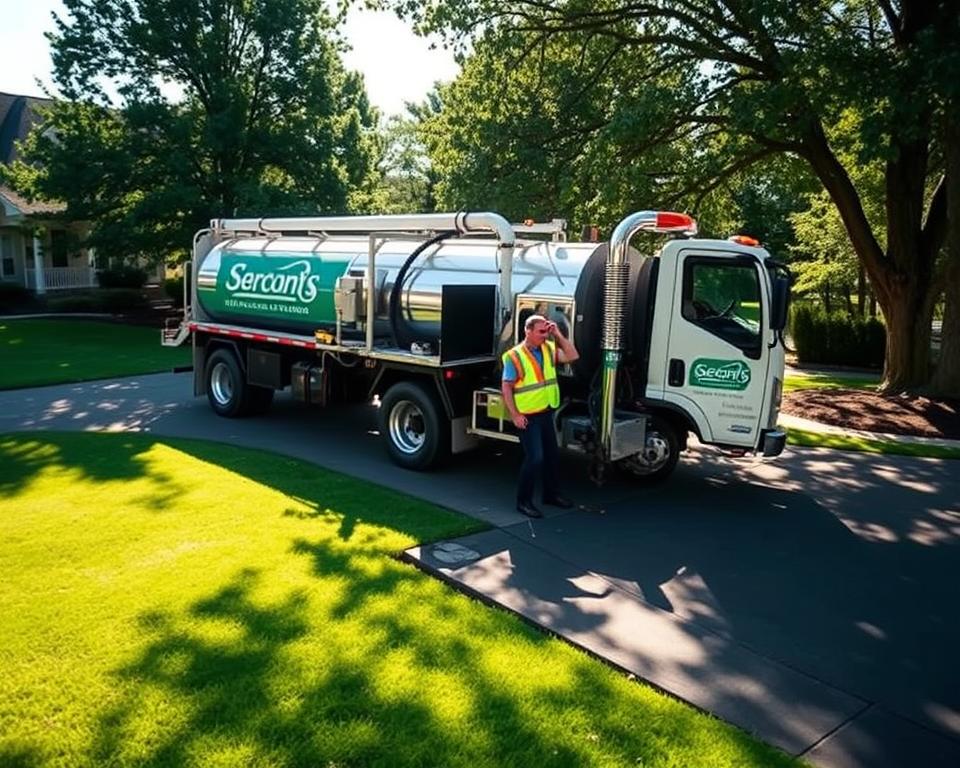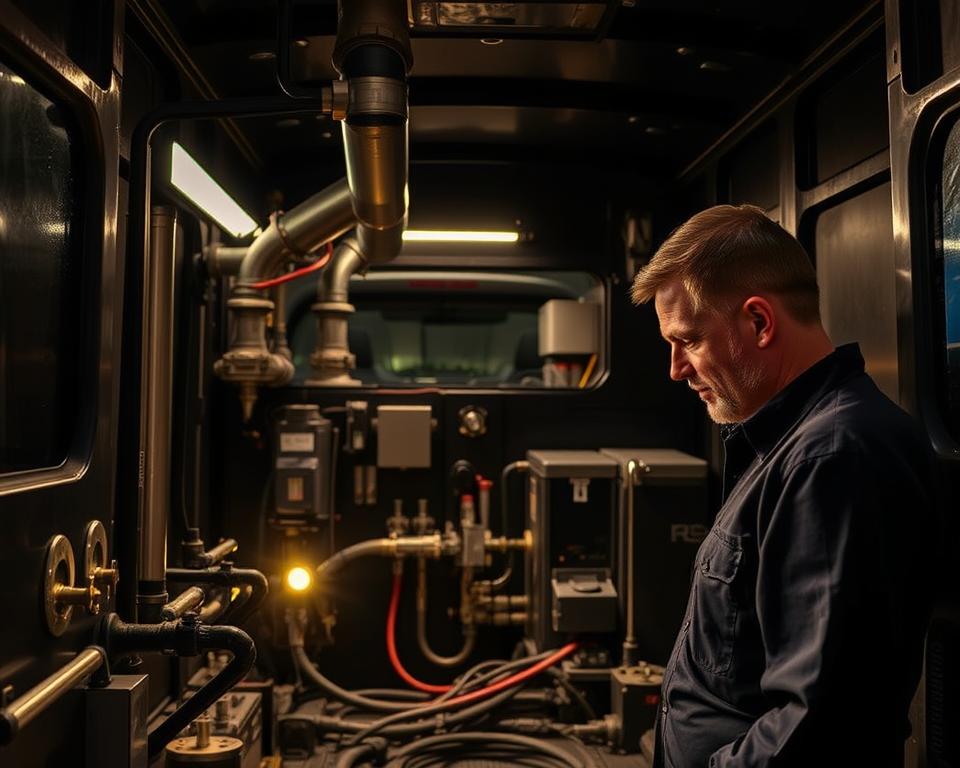Oil Trap Cleaning: Maintain Your Kitchen Operating Efficient
Ever considered the function of a small device in averting commercial culinary pipework disasters? Oil trap cleaning transcends mere maintenance—it’s crucial for efficient dining establishment kitchen refuse handling. These interceptors, vital for capturing fats, oils, and grease (FOG) generated during meal preparation, prevent clogs. Without regular pumping, they can clog, causing expensive repairs and operation interruptions. Let’s delve into the importance of grease interceptor pumping and its part in ensuring a seamless kitchen functioning, all while complying to ecological standards.
Understanding Oil Traps and Their Importance
Oil traps are essential for the efficient operation of business kitchens and meal processing establishments. They collect grease, fats, and hard refuse before they reach the drainage system. This function is key for maintaining kitchen hygiene. It’s important to grasp how these traps work to make certain they operate effectively and support a clean work space.
What are Grease Interceptors?
A grease trap, also called a commercial kitchen grease trap cleaning, is a gadget intended to collect fats, oils, and grease (FOG) from wastewater. Installed in the pipework of culinary spaces or food service establishments, it prevents these substances from going into the sewer system. This stops clogs or clogs in conduits, avoiding costly fixes and potential hygiene issues.
How Do Oil Interceptors Work?
The functioning of grease interceptors is based on gravity separation. Effluent goes into the interceptor, where heavier particles settle at the bottom. Meanwhile, less dense grease and oil float to the top, forming a layer of FOG. This arrangement allows clearer water to exit the interceptor and move into the drainage system.
Frequent inspection of grease traps is key for their optimal performance. Maintenance includes removing collected FOG and particles to prevent overflow and system breakdown. Proper fats, oils, and grease disposal through prompt maintenance ensures kitchens function seamlessly and ensures hygiene.
Common Problems with Grease Interceptors
Grease interceptors are crucial for keeping kitchens clean and operating well, especially in the meal service sector. Neglecting them can lead to numerous issues that impact functions. Understanding these problems helps in concentrating on sewage system maintenance for improved functionality.
Blockages and Blockages
Clogs and obstructions are significant concerns with grease interceptors. They often originate from fats, oils, and greases (FOG) accumulation. This collection can block liquid flow, causing sewage clogs. Thus, frequent pipe clearing is crucial to stop these clogs. Consistent inspections help spot obstructions in advance, preventing bigger issues.
Foul Odors and Insect Invasions
Ignoring grease traps also causes foul odors and pest invasions. Collected organic material causes unpleasant smells, rendering the kitchen undesirable to occupy. These odors attract pests, increasing hygiene risks. A consistent maintenance schedule for grease interceptors is crucial to handling food service sector refuse efficiently. It ensures a sanitary, pest-free environment, fostering a safer kitchen environment.
Oil Interceptor Pumping: Crucial Upkeep for Your Kitchen
In the world of restaurants and business culinary spaces, grease trap pumping is vital for upkeep. Making sure your grease interceptor remains in top shape is essential for both functional efficiency and ecological compliance. It’s vital to know the ideal cleaning frequency and to identify indicators that indicate the need for maintenance. This knowledge can significantly reduce expenses and conserve effort over the long run.
Frequency and Scheduling of Cleaning
Choosing the correct pumping frequency for grease traps depends on various elements. The capacity of the trap and the volume of fats, oils, and grease (FOG) your kitchen generates are important considerations. Generally, it’s advised to clean grease traps every 1 to 3 months. Frequent inspections assist in maintaining smooth functioning and compliance to local legal standards.
Signs That Your Oil Interceptor Requires Pumping
Being aware for signs that your grease interceptor needs pumping can avoid more severe issues. Look out for these indicators:
- Slow drains: If sinks empty more slowly than usual, it could indicate the grease interceptor is full.
- Frequent pipework backups: Frequent backups suggest a grease trap having trouble to manage waste amount.
- Foul smells: A unpleasant odor near the interceptor indicates it’s time for pumping.
Addressing these indicators promptly improves performance and guarantees environmental compliance for restaurants. Regular maintenance prevents expensive fixes and promotes a sanitary culinary environment.
Benefits of Regular Grease Trap Maintenance
Regular maintenance of grease traps is vital for your culinary space’s efficiency and operation. A regular schedule for inspections and clearing prevents interruptions and guarantees a safe, hygienic cooking space. This preventative approach is key to a efficient kitchen.
Preventing Costly Fixes
Proactive maintenance helps kitchen operators spot and fix issues early. Regular inspections uncover blockages and obstructions, preventing costly repairs that could halt operations. Each upkeep visit makes sure grease traps function well, lowering the risk of pipework breakdowns and emergencies.
Enhancing Kitchen Hygiene
Frequent maintenance of grease traps boosts kitchen hygiene. It reduces grease and meal particles, reducing the danger of bad smells and microbes. A sanitary grease interceptor creates a more secure cooking area and meets meal hygiene standards, crucial for patron satisfaction. Efficient upkeep has a significant beneficial effect on kitchen operations.
| Benefit | Explanation | Effect on Kitchen Functions |
|---|---|---|
| Cost Savings | Reduces the risk of unplanned plumbing problems that incur high repair expenses. | Guarantees consistency of business without unplanned disruptions. |
| Enhanced Hygiene | Reduces bad smells and bacteria linked to grease accumulation. | Creates a sanitary and safe environment for meal preparation. |
| Adherence | Meets legal standards by ensuring sanitation. | Prevents penalties and regulatory problems due to substandard kitchen sanitation methods. |
Choosing the Right Grease Trap Maintenance Service
Choosing a reliable grease trap cleaning provider is essential for ensuring optimal functioning in dining establishments and business kitchens. It’s important to select a provider with extensive experience in grease trap maintenance. Firms like Oil Interceptor Cleaning Service ensure compliance with local regulations and offer thorough maintenance to keep your grease traps functioning.
Experience and Expertise in Offerings
A reputable provider has a proven history in handling grease interceptors effectively. Their knowledge in business plumbing offerings allows them to spot possible issues early. With experienced technicians, businesses can expect detailed maintenance and upkeep routines tailored to each kitchen’s unique requirements. This method extends the longevity of the drainage system.
Ecological Accountability in Refuse Disposal
Provider excellence isn’t the only consideration; environmental compliance is equally important. The right grease trap maintenance company emphasizes responsible waste disposal methods. Efficiently managing the collection and disposal of grease and particles shows a dedication to eco-friendliness. By choosing a service that matches with these principles, businesses can ensure their grease trap maintenance is both efficient and environmentally responsible.



